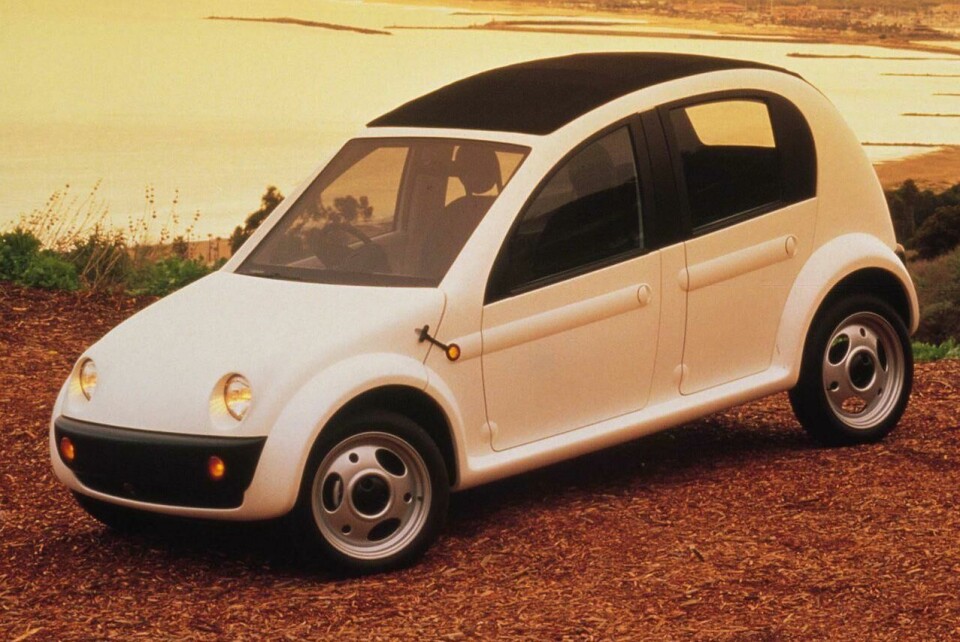
Concept Car of the Week: Chrysler CCV (1997)
The lightweight, low cost concept that owed more than a little to the Citroën 2CV
Taking such obvious inspiration from the form language of one of the world’s most recognisable cars is risky. But while it doesn’t take a genius to notice that the CCV owes a lot to the 2CV, in both looks and the play on its name, Chrysler’s design choices become much more understandable when you look at thinking behind its late-90s concept.
The CCV started life as the China Concept Vehicle, designed to meet the needs of emerging markets, much like the 2CV was created to mobilise France’s rural communities. The CCV was first shown in 1996, but was given a grander unveiling at the Frankfurt Motor Show the following year, where the name was changed to Composite Concept Vehicle.

The composite in question was called Impel, a fully-recyclable material made of polyethylene terephthalate, or PET, the plastic that drinks bottles are made from. The equivalent of 2,000 bottles-worth of PET was mixed with glass powder to add strength, and then injected into large moulds – the largest used in the automotive industry at the time.
This created four, large body panels that were then glued and bolted together to form the car’s body and chassis, while metal subframes bolted on to hold the suspension and powertrain.
The idea was to drastically simplify the production process. Due to its small number of parts, and no need for paint, a CCV would take 6.5-hours to build, instead of 19 for an equivalent compact car of the time. It would also cost a fifth of the amount – around £4,000 in 1997. It was powered by a two-cylinder air-cooled engine, like a 2CV, but could hit a top speed of 70mph thanks to its 544kg weight, of which the plastic body contributed just 95kg.
The car was designed by a team headed by Brian Nesbitt, of PT Cruiser fame. The car featured a 200mm ground clearance, to cope with poor road infrastructure in its target markets, while the roof was canvas, and held on using zips. The roof also formed part of the luggage-space opening, zipping down to meet a small tailgate. The headlamps were moulded into the hood, while the indicators and rear lamps were set into the bumpers.

Engineered for right or left-hand drive, the cabin included removable rear seats, while the whole interior was designed to be able to be cleaned with a hose. Even the window winders were rethought, adopting a simple slider that ran up and down each door card, in a more successful way than Lancia had done with the Stratos.
Despite the intelligent thinking that had gone into the CCV project, the car was axed as a condition of the merger between Daimler and Chrysler that happened in 1998. However, the composite material has been used in Jeep Wrangler hardtops since, and, of course, thousands more drinks bottles.




